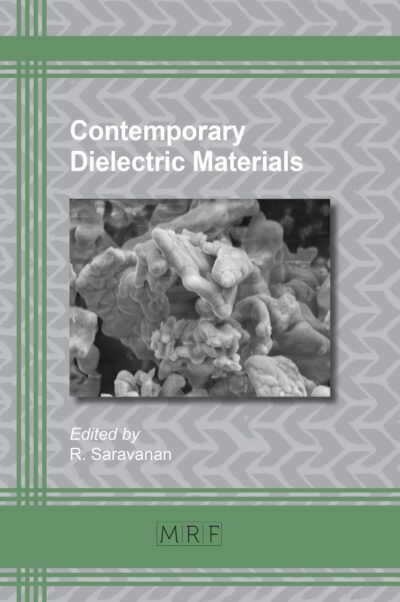Charge density analysis and magnetic behavior of Li doped NiO nanostructures synthesized by sol-gel process
K. Sakthi Lavanya, B. Subha, M. Prema Rani, R.Saravanan
Li-doped nickel oxide nanostructures (Ni1-xLixO, x=0, 0.03 and 0.06) of crystallite size of around 20 nm have been prepared using the sol-gel process. The cell constant of the prepared samples decreases with the concentration of Li dopant. This ensures that Li occupies the host lattice of Ni. The electronic charge distributions in the unit cell were analyzed through the maximum entropy method (MEM) for the prepared cubic nickel nanostructure. The bonding features of the prepared doped nanostructures were analyzed and they are found to behave like covalent materials. From the UV analysis, the band gap was determined as 3.28 eV for NiO. Strong ferromagnetic behavior is observed for 3% Li doped NiO. Further addition of Li dopant causes decrease in ferromagnetism.
Keywords
Nanostructures, XRD, Rietveld Refinement, MEM, Electron Density
Published online 1/1/2017, 17 pages
DOI: https://dx.doi.org/10.21741/9781945291135-10
Part of Contemporary Dielectric Materials
References
[1] H. Sato, T. Minami, S. Takata, T. Yamada, Transparent conducting p -type NiO thin films prepared by magnetron sputtering, Thin Solid Films 23 (1993) 27-31. https://dx.doi.org/10.1016/0040-6090(93)90636-4
[2] X. Luo, L.T. Tseng, S. Li, J.B. Yi, Room temperature ferromagnetic ordering of NiO films through exchange coupling, Mat. Sci. Semicon. Proc. 30 (2015) 228–232. https://dx.doi.org/10.1016/j.mssp.2014.10.009
[3] S. Saravanakumar, R. Saravanan, S. Sasikumar, Effect of sintering temperature on magnetic properties and charge density distribution of nano-NiO, Chem. Pap. 68 (2014) 788–797. https://dx.doi.org/10.2478/s11696-013-0519-1
[4] I. Sugiyama, N. Shibata, Z. Wang, S. Kobayashi, T. Yamamoto, Y. Ikuhara, Ferromagnetic dislocations in antiferromagnetic NiO, Nat. Nanotechnol. 8 (2013) 266–270. https://dx.doi.org/10.1038/nnano.2013.45
[5] F.H. Aragón, P.E.N. de Souza, J.A.H. Coaquira, P. Hidalgo, D. Gouvêa, Spin-glass like behavior of uncompensated surface spins in NiO nanoparticulated powder, Physica B 407 (2012) 2601–2605. https://dx.doi.org/10.1016/j.physb.2012.04.003
[6] R.M. Gabr, A.N. EI-Naimi, M.G. AI-Thani, Preparation of nanometer nickel oxide by the citrate-gel process. Thermochim. Acta 197 (1992) 307-318. https://dx.doi.org/10.1016/0040-6031(92)85029-U
[7] M. Yoshio, Y. Todorov, K. Yamato, H. Noguchi, J. Itoh, M. Okada and T. Mouri, Synthesis and characterization of NiO nanoparticles by sol-gel method, Materials transactions 74 (1998) 46-53. https://dx.doi.org/10.4028/www.scientific.net/amr.123-125.181
[8] S.C. Chen, T.Y. Kuo, Y.C. Lin, C.L. Chang, Preparation and properties of p-type transparent conductive NiO films, Adv Mater Res. 123 (2010) 181–184.
[9] R.C. Korosec, P. Bukovec, Sol–gel prepared NiO thin films for electrochromic applications. Acta Chim Slov. 53 (2006) 136–147.
[10] I.M. Chan, F.C. Hong, Improved performance of the single-layer and double-layerorganic light emitting diodes by nickel oxide coated indium tin oxide anode.Thin Solid Films 450 (2004) 304–311. https://dx.doi.org/10.1016/j.tsf.2003.10.022
[11] I. Hotovy, J. Huran, P. Siciliano, S. Capone, L. Spiess, V. Rehacek, Enhancement of H2 sensing properties of NiO-based thin films with a Pt surface modification, Sens Actuator B-Chem. 103 (2004) 300–311. https://dx.doi.org/10.1016/j.snb.2004.04.109
[12] A.Krier, M. Yin, V .Smirnov, et al., The development of room temperature LEDs and Lasers for mid-infrared spectral range, Phys Stat Sol A. 205 (2008)129-143. https://dx.doi.org/10.1002/pssa.200776833
[13] H. Ohtah, M. Kamiya, T. Kamiya, M. Hiran, H. Hosono, UV-detector based on pn-heterojunction diode composed of transparent oxide semiconductors, p-NiO/n-ZnO,Thin Solid Films 445 (2003) 317–321. https://dx.doi.org/10.1016/S0040-6090(03)01178-7
[14] A.E. Berkowitz and K. Takano, Exchange anisotropy – a review, J.Magn. Mater. 200(1999) 552-570. https://dx.doi.org/10.1016/S0304-8853(99)00453-9
[15] V. Skumryev, S. Stoyanov, Y. Zhang, G. Hadjipanayis, D. Givord and J. Nogue´, Ordered magnetic nanostructures, Nature 423 (2003) 850-853. https://dx.doi.org/10.1038/nature01687
[16] K.C. Liu, M.A. Anderson, J. Porous nickel oxide/nickel films for electrochemical capacitors, Electrochem. Soc. 143 (1996) 124–130. https://dx.doi.org/10.1149/1.1836396
[17] Y.D. Wang, C.L. Ma, X.D. Sun, H.D. Li, Preparation of nanocrystalline metal oxide powders with the surfactant-mediated method, Inorg. Chem. Commun. 5 (2002) 751–755. https://dx.doi.org/10.1016/S1387-7003(02)00546-4
[18] L. Xiang, X.Y. Deng, Y. Jin, Experimental study on synthesis of NiO nano-particles, Scripta. Mater. 47 (2002) 219–224. https://dx.doi.org/10.1016/S1359-6462(02)00108-2
[19] E.R. Beach, K.R. Shqaue, S.E. Brown, S. J. Rozesveld, P.A. Morris, Solvothermal synthesis of crystalline nickel oxide nanoparticles, Mater. Chem. Phys. 115 (2009) 373–379. https://dx.doi.org/10.1016/j.matchemphys.2008.12.018
[20] S. Deki, H. Yanagimito, S. Hiraoka, NH2-terminated poly (ethylene oxide) containing nanosized NiO particles: synthesis, characterization, and structural considerations, Chem. Mater. 15 (2003) 4916–4922. https://dx.doi.org/10.1021/cm021754a
[21] H.M. Rietveld, The Rietveld Method, J. Appl. Crystallogr. 2 (1969) 655-697. https://dx.doi.org/10.1107/S0021889869006558
[22] V. Petricek, M. Dusek, L. Palatinus Jana, The crystallographic computing system Institute of Physics, Praha, Czech Republic, (2006).
[23] S. Kumazawa, Y. Kubota, M. Takata, M. Sakata, Y. Ishibashi, Electron-density-distribution Calculation by the maximum-entropy method, Journal of Applied Crystallography. 26 (1993) 453-457. https://dx.doi.org/10.1107/S0021889892012883
[24] F. Izumi, R.A. Dilanian, Recent research developments in physics Part II, vol. 3 (Transworld Research Network, Trivandrum, (2002).














